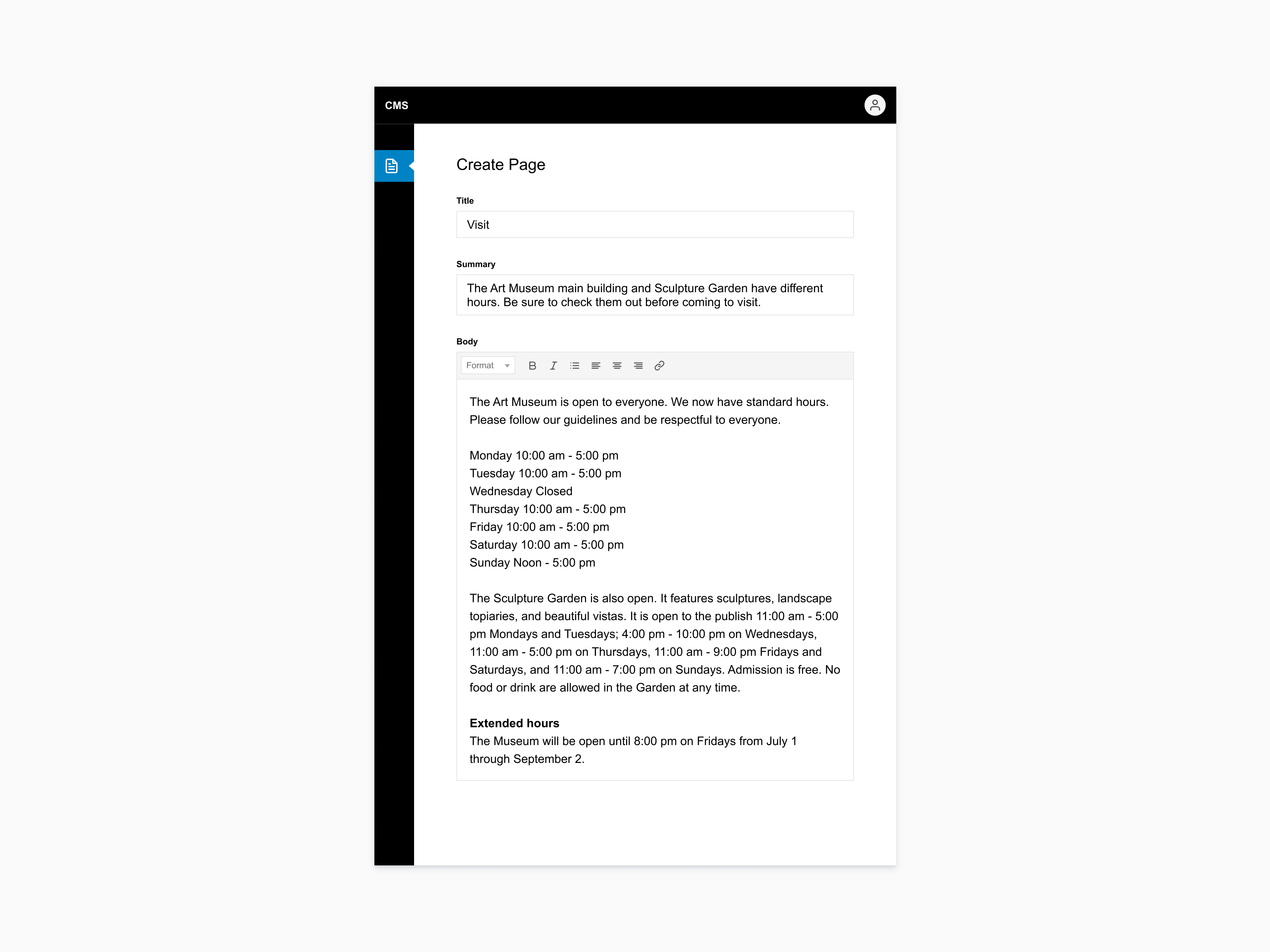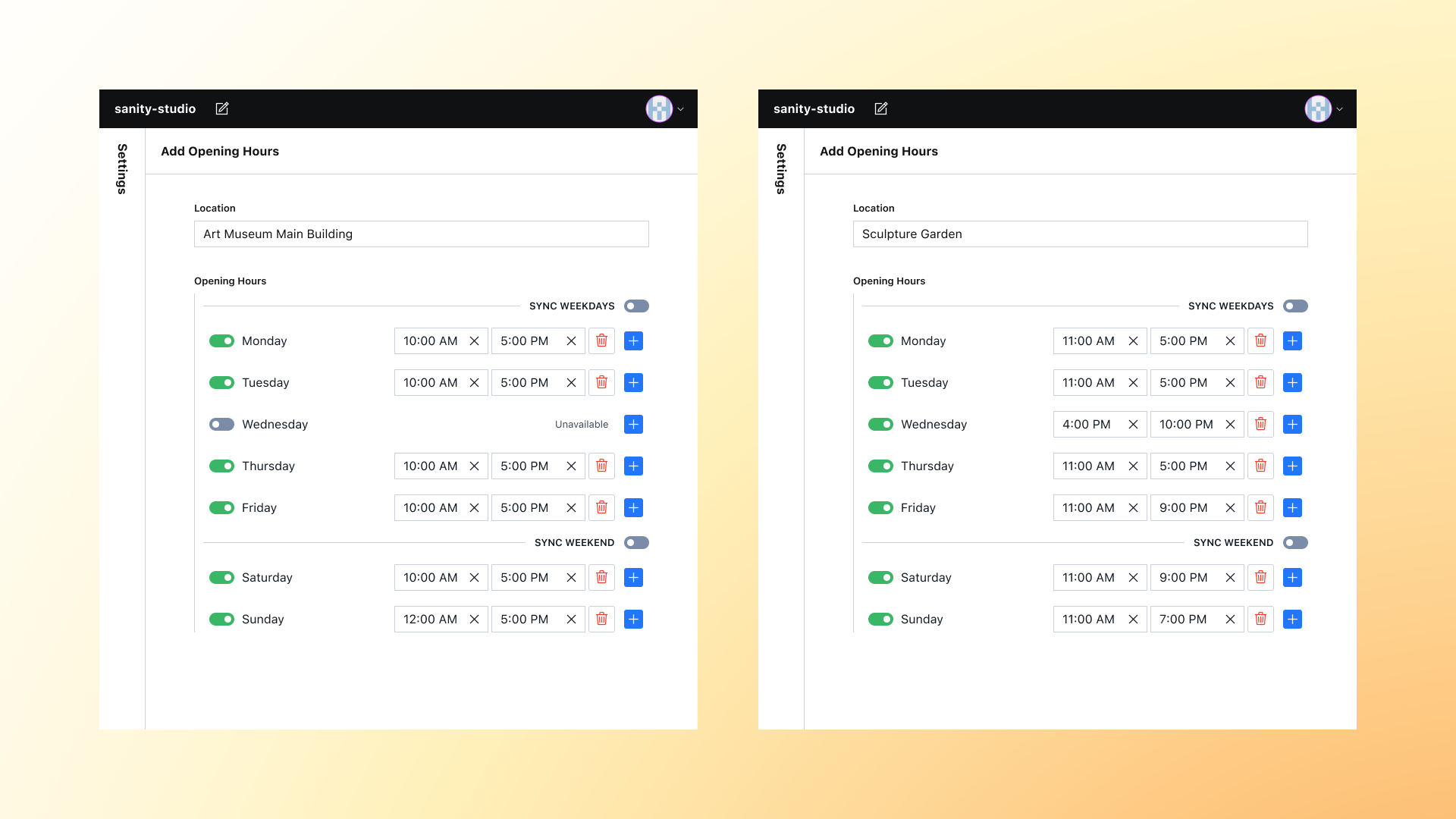Making website updates easier with structured content
There are many types of content within your organization that can change fast and need to stay consistent. Structuring it can help.

Sarah Beldo
Head of Content Marketing and Communications at Sanity.io
Published
Rebrand.
The word alone can spark goosebumps. Goosebumps of anticipation to see an exciting new design, or goosebumps of dread if you are one of the people responsible for changing all the many, many, many places where a new name or logo appears. Because without the right setup, the process of updating content across multiple systems and pages can be truly grueling.
I was reminded of this slog when it was recently announced that the Twitter logo was being retired in favor of X. Amid the chatter about the future of the brand and company, the mundane details of what it takes to make such a switch may have been overlooked.
But we at Sanity empathize with the developers and content managers who are searching, copying, pasting, and verifying changes like these every day. We’re committed to helping content teams reduce chores and burdens like this with intelligent tools like AI Assist.
We’re also long-time proponents of structured content, where you break your content down into its smallest component parts and store it in a central source of truth (like Sanity's Content Lake). From there, your content becomes data that can be queried and displayed across any channel or property.
Making website updates easier with structured content
Thinking about the implications of a rebrand on content operations, Sanity’s Principal Digital Strategist Carrie Hane recently explained:
For company information, a structured content approach means storing global company information as fields in a CMS content type.
You could store the Company Name (plus alternative names), Logo (all versions), Address(es), Phone Number(s), Targeted Emails, Social Media Accounts, and whatever other info that is company canon as data in a content type.
You could then pull that data into wherever you needed it: website header and footer, About Us & Contact pages, apps, product info screens, and anywhere else a content API can feed.
When you get the task of updating any or all of those items, you can update it once and have it repopulate everywhere. The dream!
But to be able to harness this kind of potential, you need to be thinking proactively about how your content is organized and structured. There are many types of content within your organization that can change fast and need to stay consistent. Here are examples of how structured content can make that change much easier.
Product descriptions
For Sanity’s e-commerce customers, this is one of the most common types of updates—and one that can be frustrating if you have an inefficient setup. Imagine an online shoe store. Each pair of shoes has a description, and it appears in many places across a website, mobile app, and potentially other locations, like microsites or landing pages. Having a single place to store and retrieve product description information means that when it needs to be changed, you only need to make the update in one place—and it automatically gets pushed out to all the appropriate places.
Location and/or hours updates
This is a common scenario for any business with a physical location. In our Guide to Structured Content, we use a museum as an example. If you stored your opening hours in an unstructured text body field (like the image below), when you needed to update your opening time, it would be really hard to find all of the places you reference that information.

However, if you break your content into meaningful pieces of data, including “hours,” you can reuse it across your entire site. And, by making a single change to the opening hours in one place, all the places it will appear automatically update in a matter of minutes—removing the risk that the wrong information will show up somewhere.

Shipping policies
Shoppers often decide to buy something based on shipping expectations: where purchases can be shipped to, how fast they get there, and how much it costs. But a lesson we’ve learned over the last few years of pandemic-induced volatility is that shipping policies can change at a moment’s notice.
To plan for the inevitability of future updates, you could chunk your policies into pieces like:
- Shipping methods
- Shipping times
- Price by destination country
This allows you to easily add, remove, or update a method, price, duration, or destination in one place and publish it everywhere. And all of that data can be aggregated into a single webpage or app screen—or used in the context of the user’s location.
Incentive or rewards programs
Most retail companies now have incentive or rewards programs for loyal customers.
You probably already consider your customer data to be structured, but the program’s categories, point system, and terms and conditions can also be considered data.
Rather than referring to a spreadsheet to create loyalty program page copy, structured content means you can curate and personalize the loyalty program page for each customer.
Your team's information: titles, names, and tenure
Tired of copying and pasting the basic details about your leadership team or board of directors in many lists? Make a Person content type and store all the information you need there. Pull it in wherever you need it.
Yes, the order of people on any given listing will need to be customized. No problem with a little curation! With structured content, you can use references on your Leadership page to choose the people, order their appearance, and even categorize them with just a few clicks and some dragging and dropping.
This way, when someone gets a new title or photo, you don’t need to hunt down every page where that person appears to update it.
Structured content is an investment for the future
We started out talking about rebranding, which isn’t in the cards for every business. But even if you aren’t taking such a drastic step, there are so many day-to-day tasks that teams are tackling that could be made dramatically easier with structured content and a single source of truth for all of your content.
Sanity: The Platform for Structured Content
Find out how leading brands including AT&T, Burger King, Unilever, and InVision use Sanity to deliver relevant content to their audiences – quickly, across multiple channels.